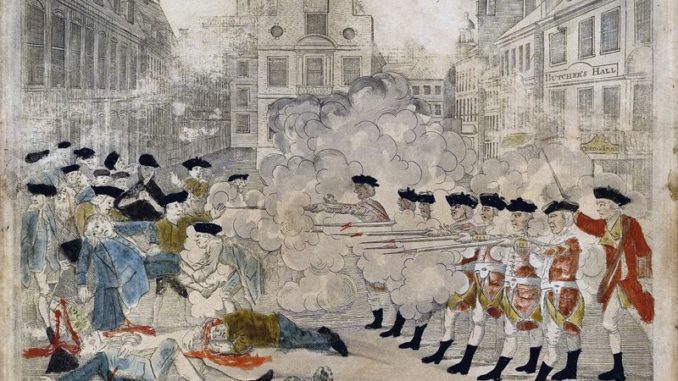
Establishing the United States of America.
For any American Government course, you need an understanding of the political separation between American colonists and the British government ruled by King George III and Parliament.
In both an effort to raise revenues to fund the British Empire and to manage the American colonies, the Parliament passed and the King enforced several laws that trampled on colonists’ liberties. The Americans also felt a lack of representation or consideration from the distant government in London. The most egregious of these laws involved taxes on all kinds of products and government services. When the colonists reacted without loyalty to the Crown–protests in print, in person, and smuggling of goods to avoid taxes–the King and his government brought the hammer down with more legislation to control and punish them.
Tension developed and altercations ensued during the period 1770 and 1775. Two impromptu congresses gathered in Philadelphia to organize and unite around the conflict, and ultimately to separate with the Declaration of Independence in 1776. The Revolutionary War lasted officially until the Treaty of Paris in 1783 brought peace, fully defined the United States, and gave this new country full sovereignty.
The government, defined by the Articles of Confederation, stumbled in its first decade, and found the need to create a Constitution in 1787. In the same building in Philadelphia, delegates from the states designed a three-branch government, a republic if you will, that remains today.
In the ratification process (1787–1790), the Federalists drafted and published arguments for the Constitution and how it would work. Those who agreed with them took the same name. Opponents, mostly pointing to the documents lack of guaranteed rights, became known as Anti-Federalists. During the months-long debate on whether to adopt thier plan, steam for a Bill of Rights developed. After the Constitution went into effect, the new Congress proposed new amendments to secure liberties, and 10 were added to the Framer’s plan.
To better understand the American Founding, examine and read this timeline and answer the questions below:
Questions:
1. List an example of an Act of Parliament that brought a tax and the commodity it taxed.
2. List an additional event that played into the American separation from Britain.
3. Name one battle and a fact about it.
4. What do you believe is the most pivotal point in this timeline, and why?